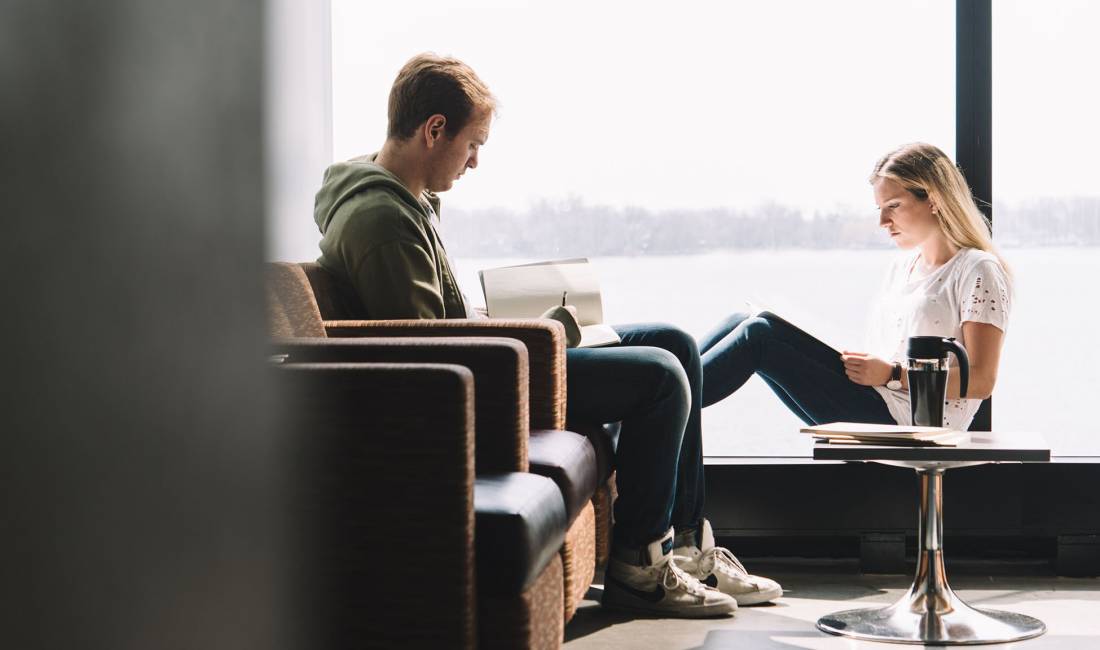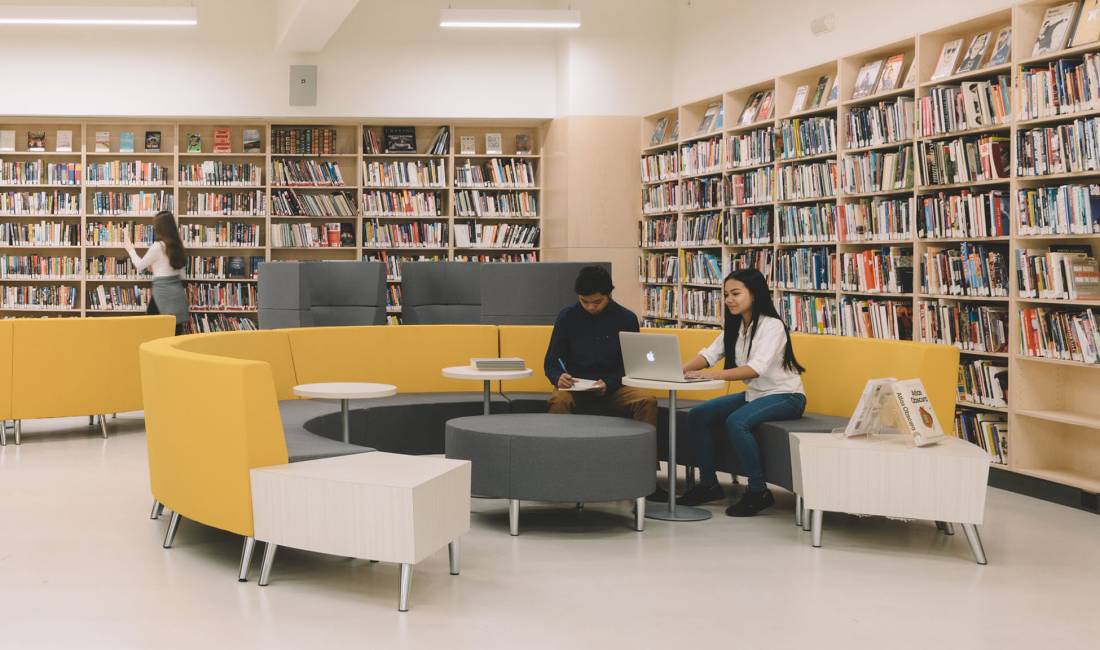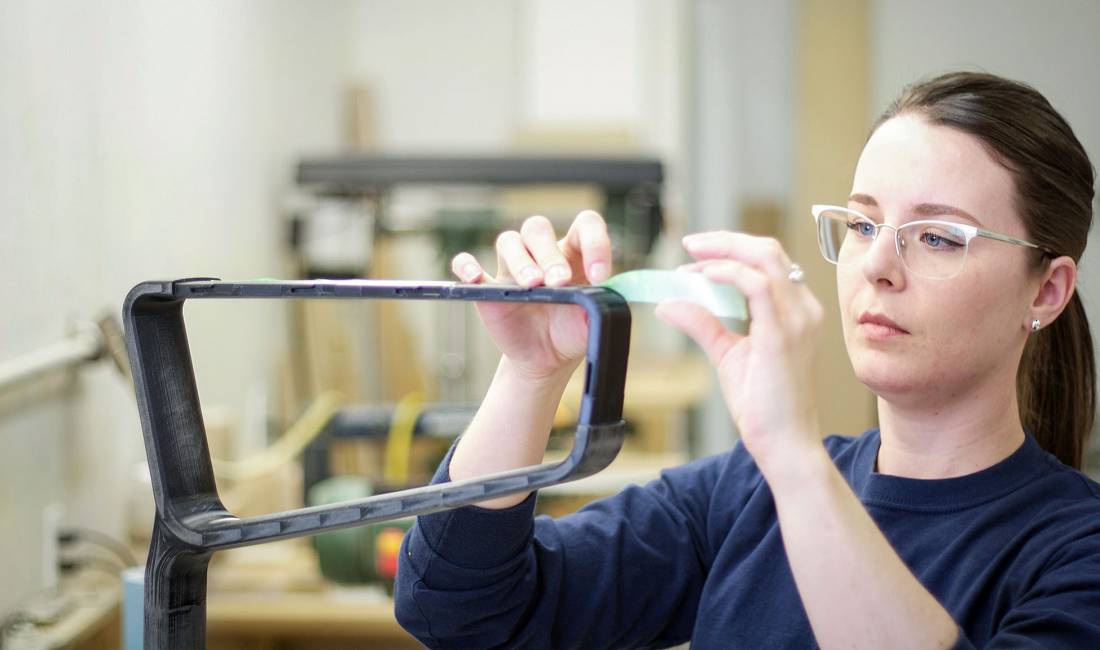Safer Products That Stay Out of the Landfill Longer: An Interview with Felipe Arias
Interview | April 19, 2018 | Beatriz Sanchez
Felipe Arias is an expert at destroying furniture. As Manager at the Global Test Facility, he is in charge of testing the limits of every product that comes his way. Within a company that designs, markets and distributes furniture, he has the unusual task of trying to destroy products.
He is in charge of one of the few on-site furniture testing labs certified by BIFMA (the voice of the commercial furniture industry) and the Standard Council of Canada. The work that gets done under his supervision is one of the main reasons Global’s quality control is so high-praised in this industry.
We caught up with him to find out how the laboratory works and what exactly his role entails.

How did you come to work for Global?
It all started at a different test facility, actually. I met Jim Suzuki [David Suzuki's cousin] and Daniel Go [the current team at Global's Test Laboratory] working at a lab where we tested toys, cribs, strollers and all kinds of stuff for kids. We worked there together for three years.
Jim and Daniel were hired by Global in 1991 and 1993, respectively. I joined them once the lab we all used to work at closed its doors in 1994. The three of us built Global’s test facility together.
What was it like to build a test laboratory from scratch?
We worked crazy hours, usually 13 to 14 hour days. The team was led by Jim Suzuki. He designed the test machines and Daniel and I assembled them. Saul [Global’s Chairman] would come to the lab every day and make sure we were keeping our schedule. It was a lot of work, but it paid off at the end.
It sure did. But what exactly do you do here?
Here is where we test every product that goes out to the market. We don’t make anything. Our job is to try to break down parts of the product and test its limits. We do it by evaluating the function, safety, durability and structural adequacy of the products. At the end of the day, a well made product stays out of the landfill longer.
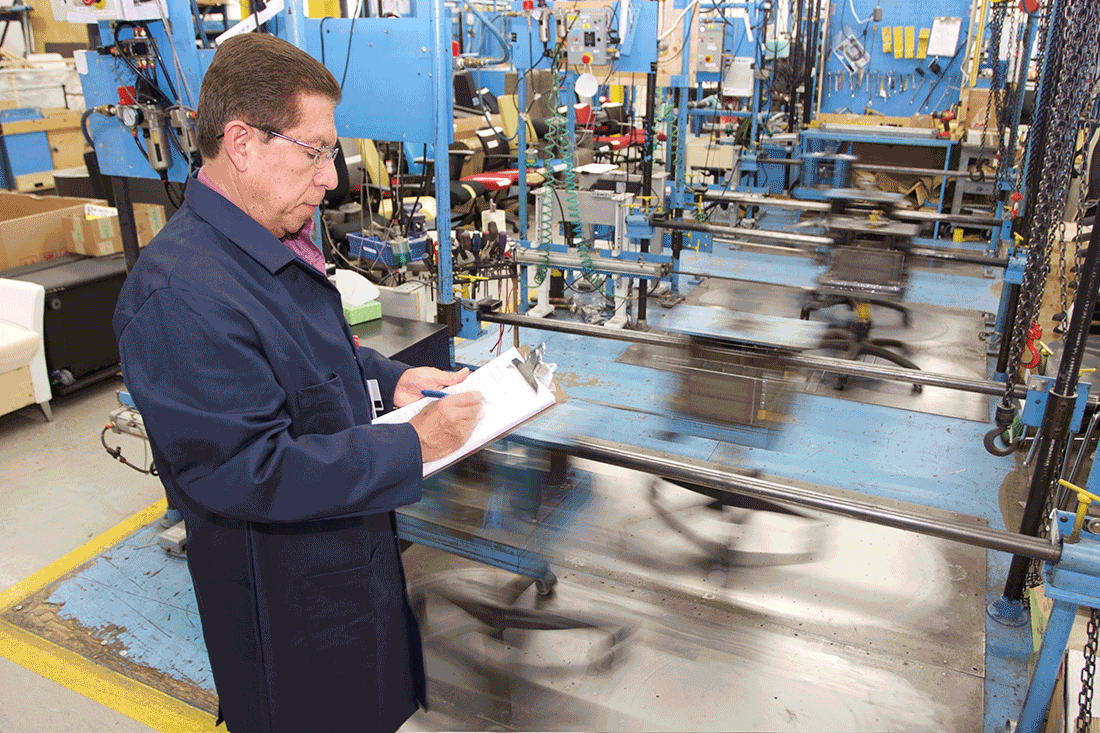
How does Global make sure every chair that goes out to the market is up to BIFMA standards?
We monitor and inspect all of Global’s product lines, as well as those products received from outside suppliers. We also make sure that finished products are tested by randomly selecting them on a 30, 60 or 90 day cycle. We've even developed our own tests in places where BIFMA hasn't defined safety issues. It is our job to make sure the customer gets the best product possible.
What is the most unusual test you do?
It’s called ‘Safety Glazing’ and we only do it once or twice a year because of how complicated it is. The goal is to simulate human impact against glazing material. We hit the glass three times with a 100 pound bag. The first hit happens from a 12 inch distance. Then we move the bag to 18 inches. If there’s no breakage, we move it to 48 inches. In order to pass the test, the glass shouldn’t break.
What is the toughest test to pass?
We call it ‘Backrest Durability test’. What it does is simulate the everyday-use a chair has in the course of ten years--even though most offices and healthcare facilities change their furniture every couple of years. The test helps us evaluate the ability of the chairs to withstand wear and tear caused by rearward force on the backrest of the chair.
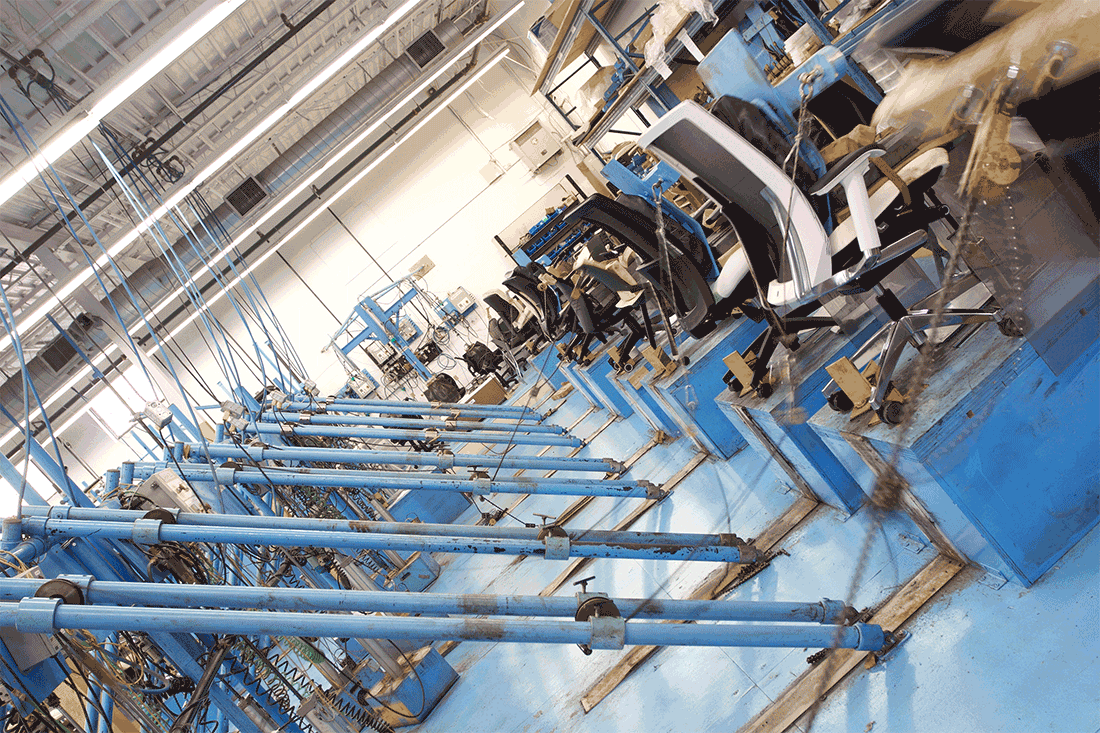
Everyone that works at an office sits in a chair. Is there a test that simulates the movement people make when they sit in a chair?
Yes, the ‘Drop Test’. This test applies to all chair types and we use it to evaluate the ability of the chair to withstand heavy and abusive impact on the seat. We place a chair on a test surface and then we drop a diameter test bag of up to 300 pounds. We do this to evaluate the base of the chair, which are the ones that support the weight.
Is there anything that people might not realize is crucial to keeping the lab running smoothly?
Making sure every machine is up and running at their best capacity is top priority for us. Honestly, every time there is the slightest problem, we call maintenance to come and fix it. This is part of what I do. I make sure there are no problems with the equipment. There can’t be.
Is there anything that you pride yourself on doing at the lab that is not part of your main tasks?
I love keeping everything clean. We give tours to customers, so it is very important to give a good impression. I remind our staff to keep the lab as clean as possible. Despite being a place where a lot is constantly going on, the test lab is always impeccable. The cleaner the lab is, the better we all work.
Enjoy this article? Don't forget to share.



